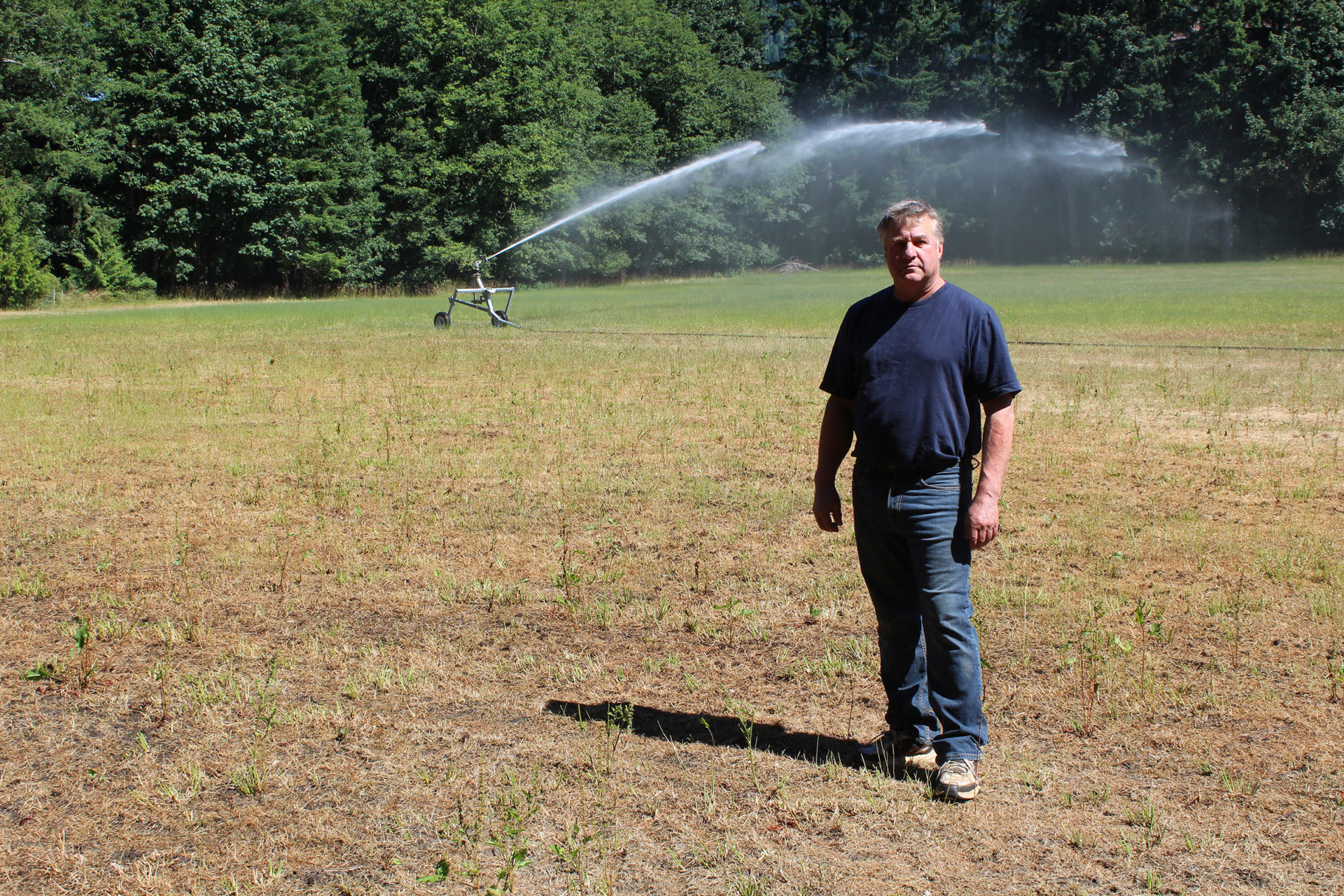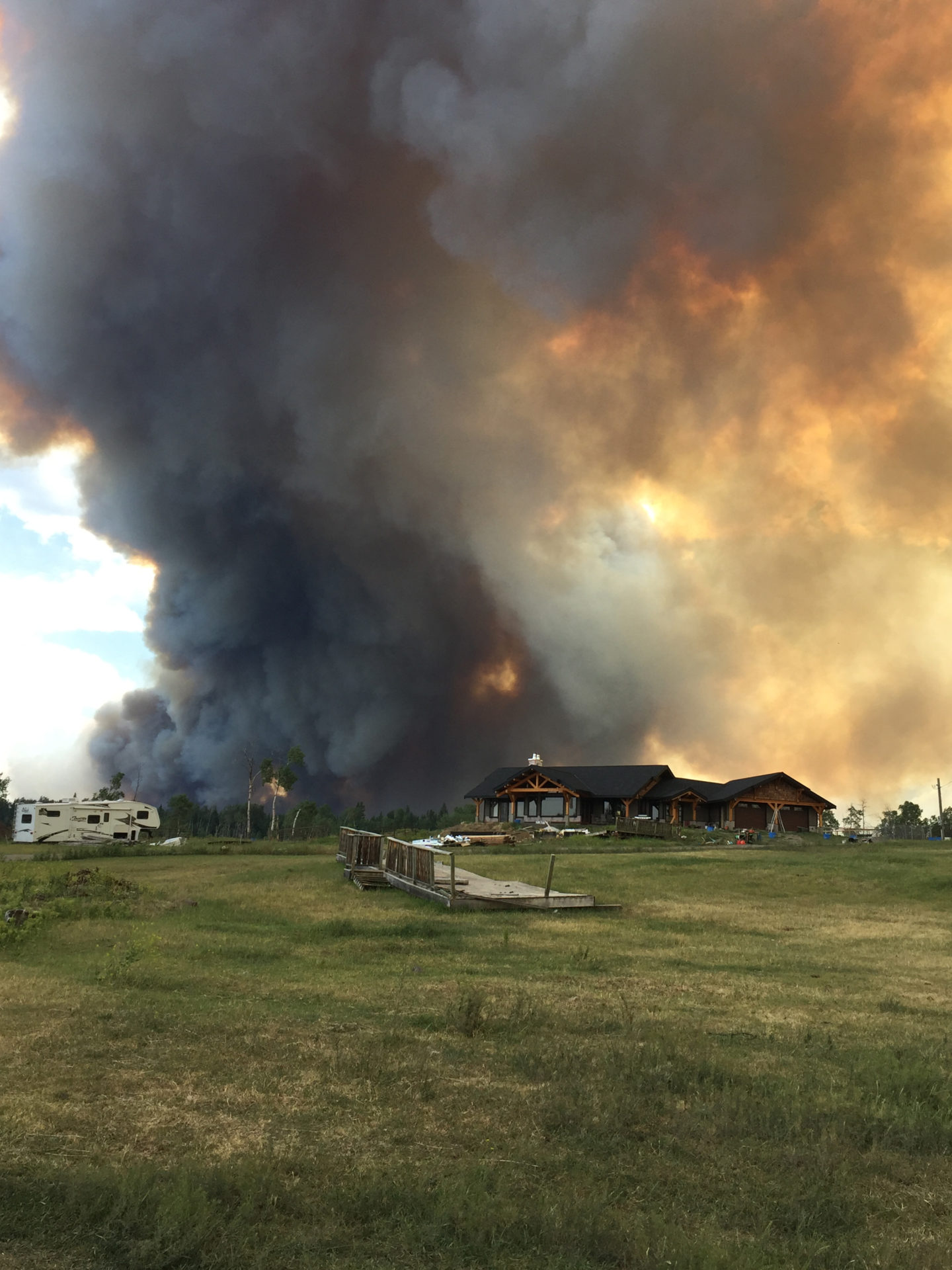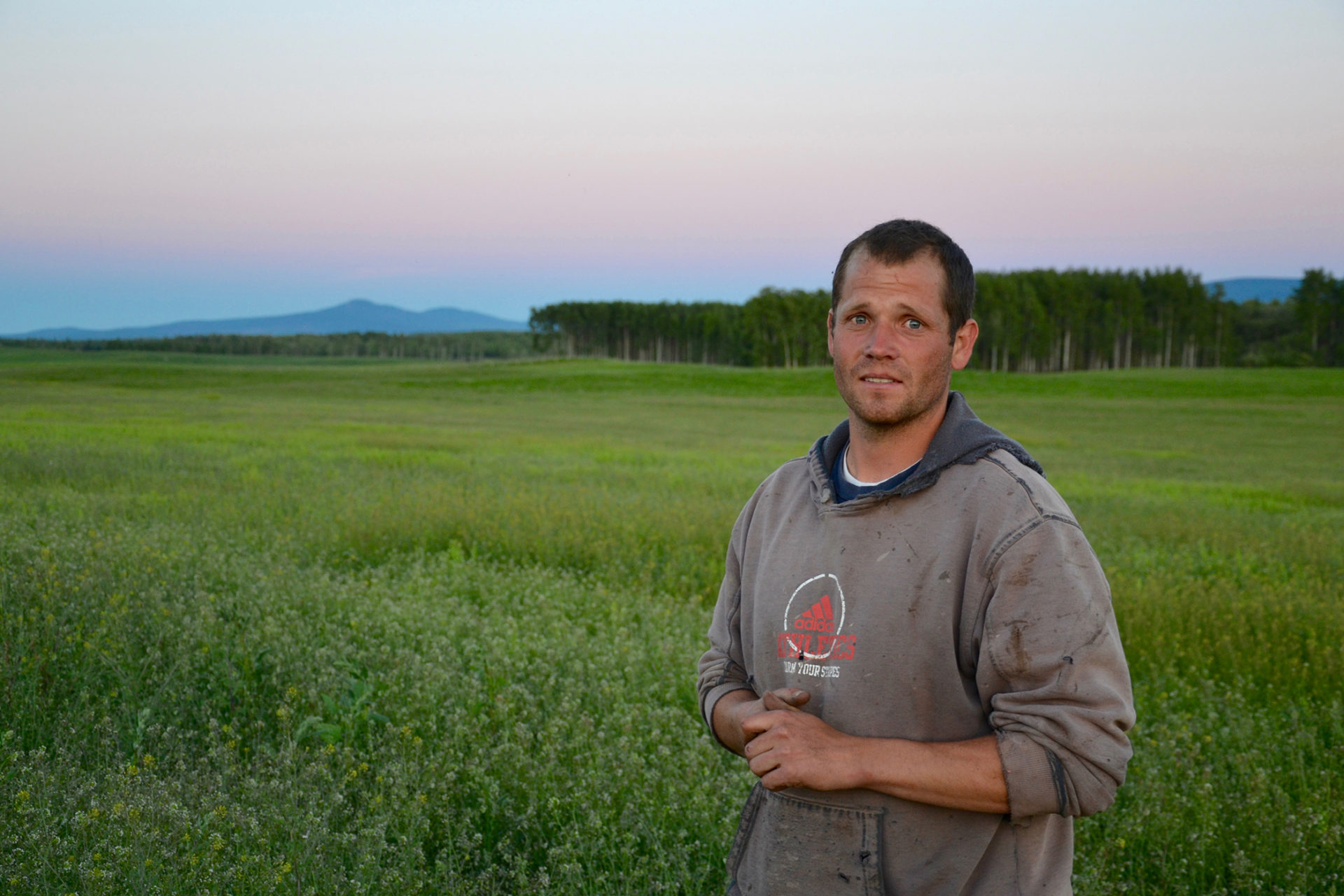PORT ALBERNI – A voracious new pest is marching its way through Vancouver Island forage crops.
“I first saw them in early June when a neighbour came by with a jar full of them and said they wrecked his second cut,” says Bob Collins, a Port Alberni beef farmer and well-known contributor to Country Life in BC. “I have them, and at least eight or 10 other farms have come forward with them in the valley.”
“Them” are Mythimna unipuncta, or True Armyworm. Collins is aware of about 1,500 acres of forage that have been affected in the Alberni Valley alone. This could mean a 75% reduction in the area’s forage crop this year.
“Nobody here has ever seen it here before,” says Collins. “It’s almost Biblical in terms of what they do. In two or three days, a field can go from lush-looking second cut to bare stocks.”
By mid-July, armyworm had been identified in the Alberni Valley, Comox Valley, Cowichan Valley, Ucluelet, Tofino and Powell River.
The infestation has been particularly intense in the Alberni Valley where agrologists counted more than 150 larvae per square foot in one field. In the Comox Valley, counts are at 50 per square foot. The recommended threshold for treatment is five.
True Armyworm is a cutworm, the larva of the White-speck Moth that overwinters in southern areas of the Americas and occasionally blows north on the wind to Canada. In the past, it has appeared in Manitoba and Ontario and occasionally other provinces east of the Rockies.
“It’s quite an anomaly that it’s over here. We think it came in on the spring storms in late March or early April,” says Tracey Huppelheuser, entomologist with the BC Ministry of Agriculture.
Borne by the wind, the moths would have laid their eggs on crops in the early spring. When the eggs hatch, larvae feed for about a month in June and early July. Once the larvae get to about 1.5 inches in length, they pupate and emerge as adult moths in early August.
“More eggs will be laid in similar areas to where it is now, then there will be new baby larvae starting by mid-August,” says Huppelheuser. “What we’re told is the second generation is not as bad as the first.”
Voracious feeders
Armyworm feed on oats, wheat, fall rye and barley as well as forage grasses. They may also feed on field and sweet corn, especially late-planted corn. Though larvae feed primarily on grasses, broad-leafed plants such as beans, peas, carrots and cabbage are also susceptible.
The presence of armyworm may have been detected late because the moths and larvae are nocturnal, making the outbreak seem more sudden than it was. Both the moths and worms are rarely seen during the day unless you go looking for them. An infested field shows minor signs of stress or slightly reduced yields until the worms hit their full feeding frenzy.
“It was hard to tell because I didn’t know what to look for. I was watching straggly fields that were usually good producers,” says Helen Smith of Glen Alwin Farm in Courtenay. “With the rough season we’ve had, it could have been the weather.”
Now that producers are aware of the problem, Huppelheuser says they can use different options to manage the worms when the next generation emerges in August.
“Cultural practices are usually not that helpful except for managing grassy weeds,” she says. “If you have larvae and you are a grass grower, you can spray for it. BtK can work if larvae are less than a half-inch or 8 mm. BtK is organic.”
Producers who are not organic have other options, including Coragen, a Group 28 chemical recommended by the Manitoba government. Producers should spray before larvae are three-quarters of an inch long to reduce the amount of damage to the field.
Huppelheuser and her team at the BC Ministry of Agriculture will be bringing in pheromone traps and light traps to help control the adult moths. Aside from spraying, she recommends grazing affected areas or cutting the hay early to salvage the next cut.
“We expect the fields that have been damaged will come back, but producers might have to take the next cut early,” says Huppelheuser. “If the hay is cut and left in rows to dry, the larvae will leave before it’s baled. If you’re doing straight cut and green feed, there’ll be some larvae in there. They are non-toxic as far as we’ve been able to tell.”
While treatments are available and the worms aren’t expected to over-winter, producers on Vancouver Island stand to face a critical shortage of feed this year. The province isn’t likely to step up with compensation for the losses, either .
“It has taken my hay crop down about two-thirds,” says Smith, who has put up enough hay for her own livestock but won’t be selling this year. “I have customers calling and asking for hay that I can’t supply.”
In the Alberni Valley, producers face some hard decisions.
“Dairy producers are lining up to bring feed in from other places. There’s no second cut whatsoever. People with beef cattle are looking at a really heavy culling,” says Collins. “There’s no way we’re going to be able to feed the number of animals we have now. We’re preparing to get rid of half the cattle on the place.”


 Ranchers first line of defense against wildfires
Ranchers first line of defense against wildfires